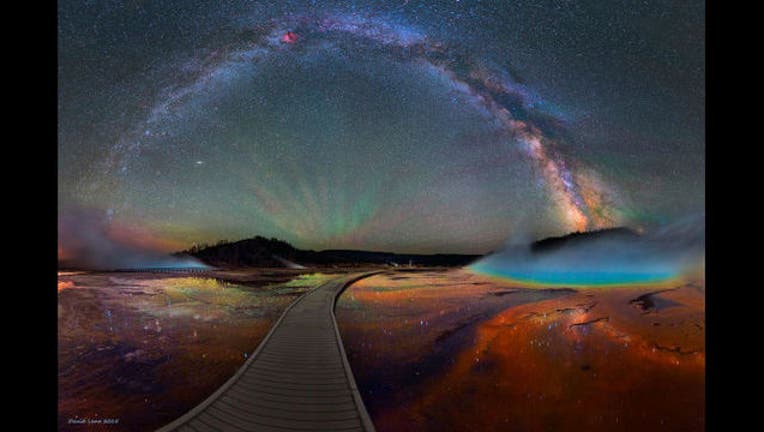Photographer captures Milky Way over Yellowstone National Park

Dave Lane
Photographer Dave Lane captured a beautiful sight at Yellowstone National Park.
Lane says a storm just passed before he captured these amazing shots.
He spent 4 months color-correcting the night time images to match them to the natural colors seen in the daytime at Yellowstone National Park.
Tips from behind the lense:
- Solitary Geyser in Yellowstone Park is anything but solitary this night. While it steams and erupts so does a large eruption from the Lion Group far below. Additionally 2 Perseid meteors flash across the vista. Two parallel faint satellite trails cross at about 11 o'clock. This is hard to photo through the constant steam and eruptions every 7-8 minutes solitary geyser is a beautiful blue and reflects many of the stars in the sky and some of the Milky Way. It makes the focus of the lower Milky Way and the areas behind it almost ghostly and very difficult to handle.
- You must focus, focus, focus.
- Use a wide angle lens with the lowest possible f ratio, preferably below f2.8. Make sure your focus is as tight as you can get by focusing on either a very distant light or the brightest star in the sky, focus is extremely critical.
- Make sure to use a tripod and use the rule of 500 which states that you divide 500 by the mm length of your camera lens. Take for example a 50mm lens, in this case your exposure would equal 10 seconds. This is the maximum amount of exposure you can take before the stars visibly move in your picture

